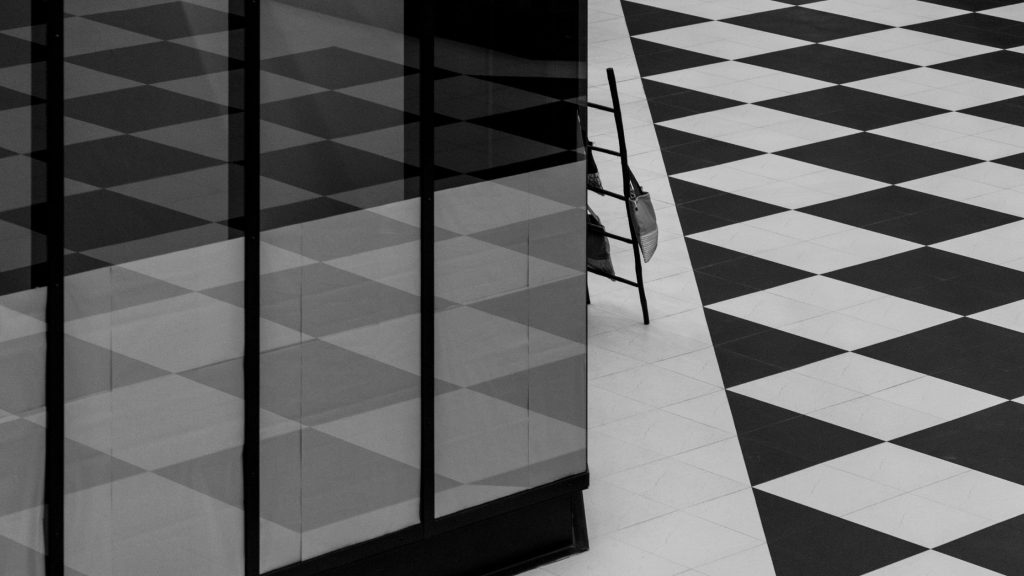Are you dreaming of adding a touch of vintage charm to your home?
The tile designs of the 1930s have a timeless appeal that can bring a unique character to any space.
Let’s explore ten stunning floor tile ideas inspired by the elegance and style of the 1930s.
1. Black and White
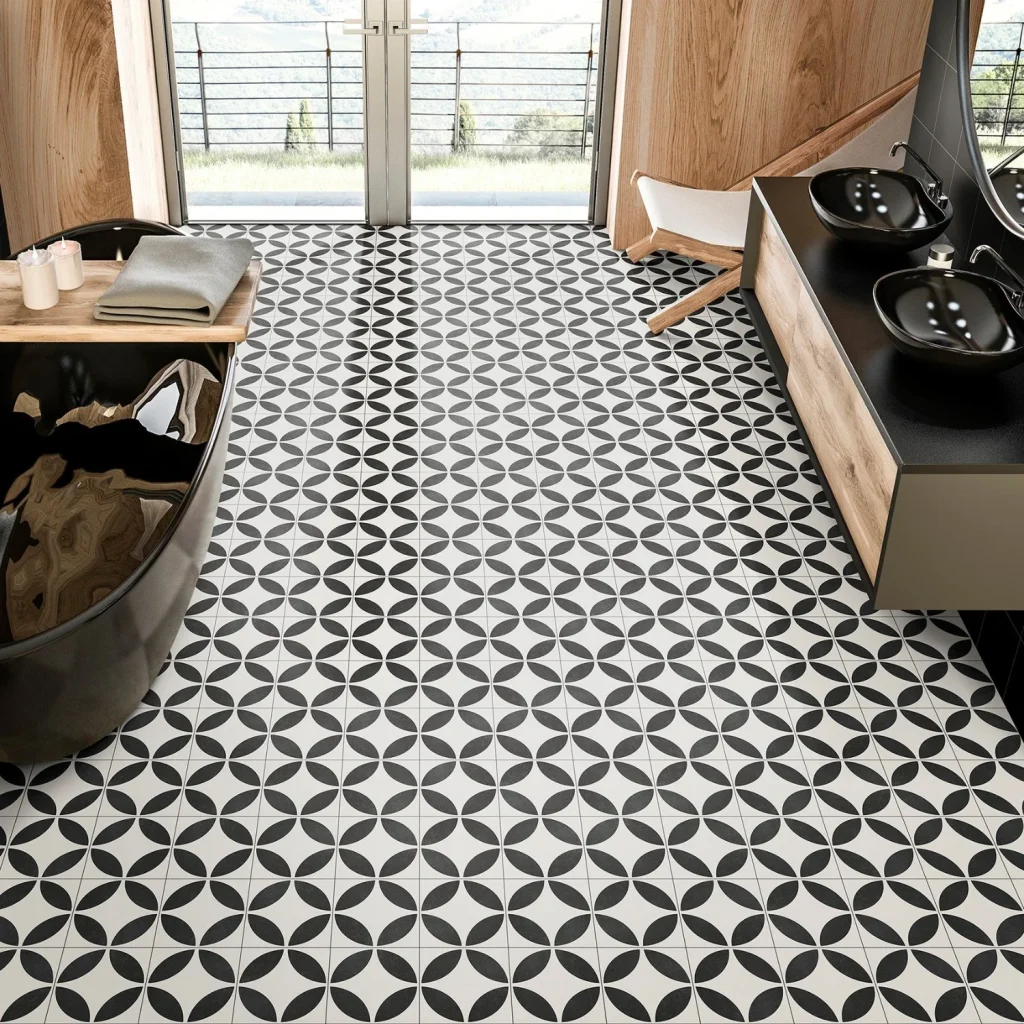
Imagine stepping into your bathroom and feeling like you’re in an Classic British Film.
Classic black and white tiles can do just that. They provide a bold deco pattern, bringing that glamorous 1930s style into your space.
Plus, these tiles are perfect for small bathrooms as they create an illusion of a larger area.
2. Art Deco
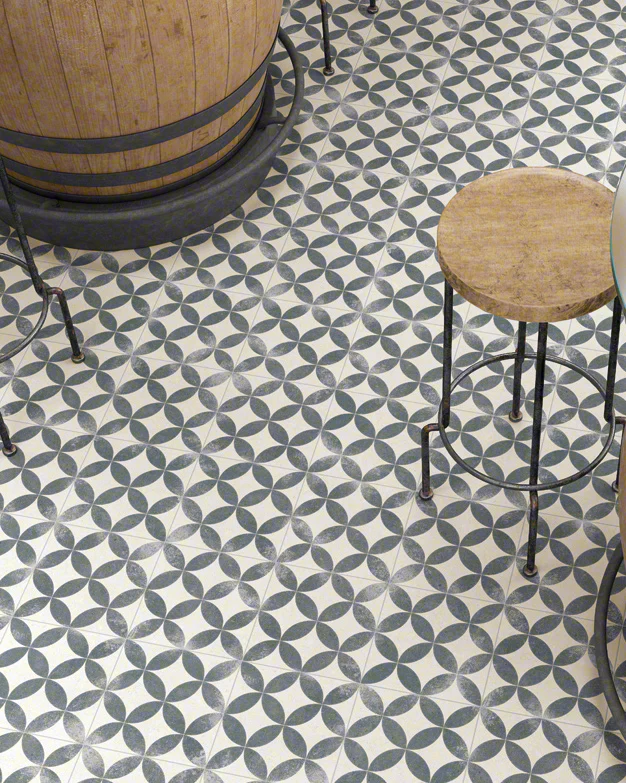
The 1930s were all about bold, symmetrical patterns and contrasting colours. Think striking combos like black and white, rich jewel tones, or elegant neutrals. Large-scale zigzags, sunbursts, and chevrons were all the rage.
Pair these eye-catching floors with curved tub chairs, glass-topped tables, and bronze wall sconces for a glamorous, moody 1930s aesthetic or offset with warm wood accents and sculptural furniture silhouettes.
Either way, let the floors steal the show as the crowning jewel of your Art Deco-inspired interior.
3. Checkerboard
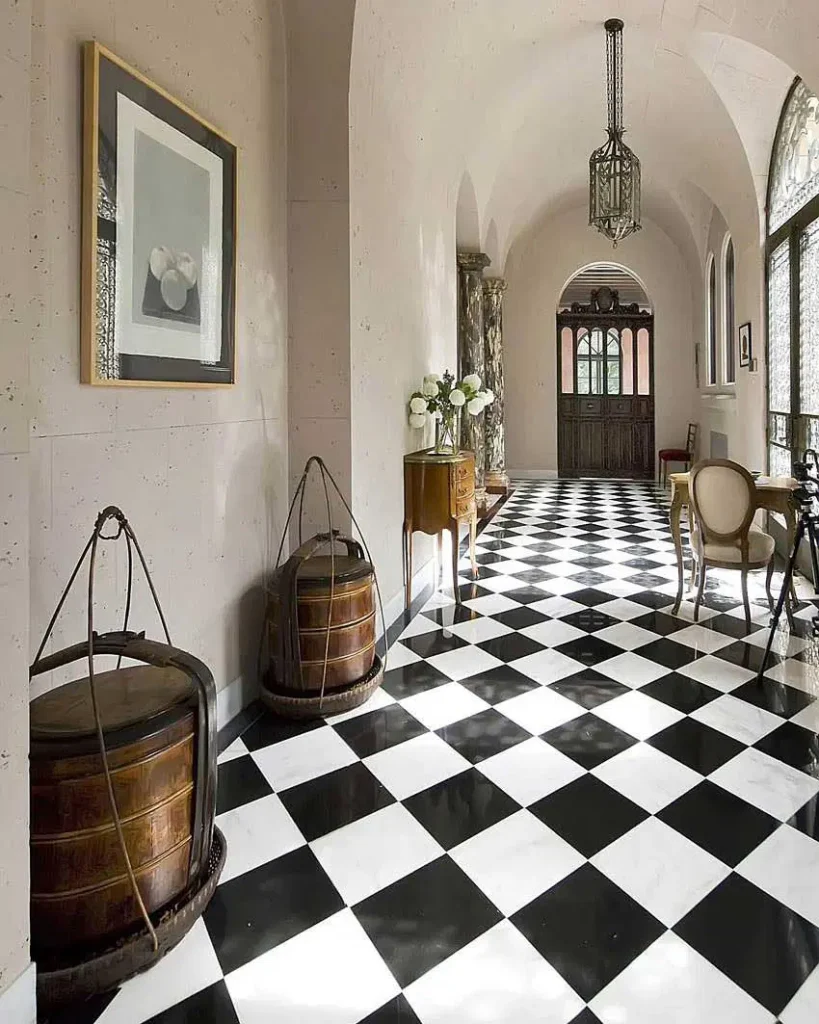
What’s more iconic of 1930s style than a classic black and white checkerboard tile floor? The graphic squares lend a playful, retro vibe to kitchens, corridors, and bathrooms.
To prevent the high contrast pattern from feeling busy, stick to a simple colour scheme for walls and furniture. You can also introduce pops of colour through appliances, stools, artwork or greenery. Just resist overlaying area rugs, which tend to compete visually.
Checkerboard tile floors create a balanced, retro look that feels both nostalgic and fresh.
4. Octagon and Dot Patterns
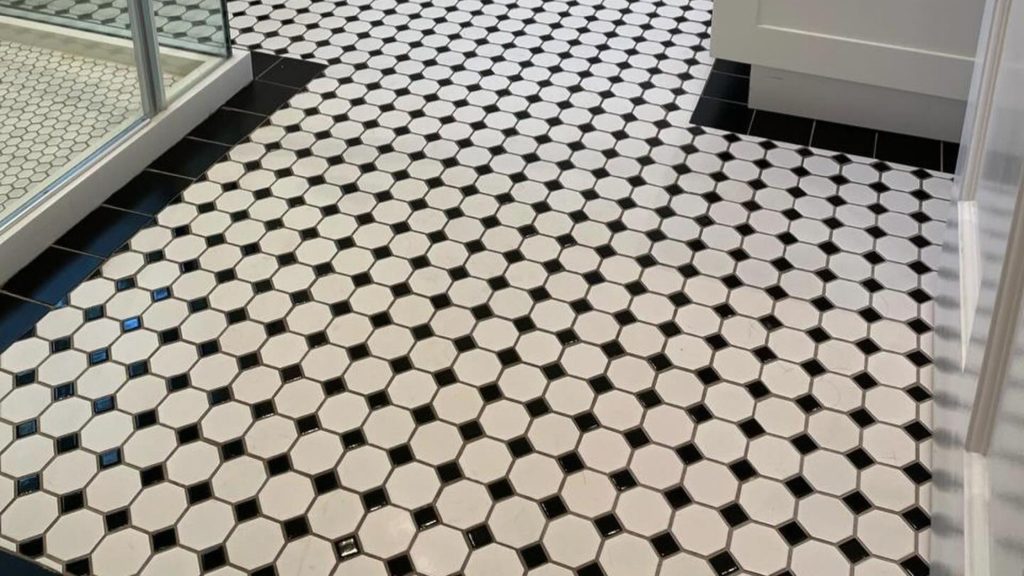
White octagon tiles with small black dot insets epitomise 1930s style. The eight-sided shapes combined with contrasting dots create eye-catching retro floors.
Pair octagon and dot tile floors with oak cabinets, chrome fixtures, and glossy black accents to reinforce the vintage aesthetic. This fun, geometric pattern suits kitchens, bathrooms, foyers and more.
It feels nostalgic yet fresh at once. For a modern twist, paint the walls black or charcoal to make the floor pop.
5. Subway Tile Floors
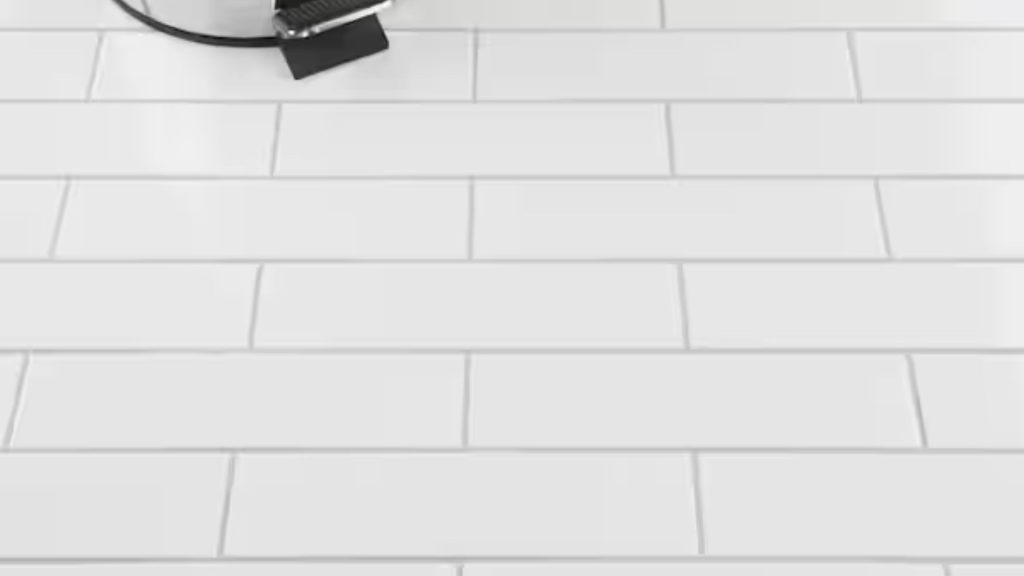
Source Image: Home Depot
White subway tiles arranged in a herringbone pattern epitomise 1930s style. The rectangular shape and monochromatic colour scheme create a clean, geometric look. Go for a longer, thinner brick laid out in opposing directions. Using all one size and colour lends cohesion. For variation, add in a contrasting colour or finish for the grout lines.
Pair herringbone subway tile floors with oak or walnut cabinets, chrome fixtures, and glossy black accents to reinforce the vintage aesthetic. This pattern suits kitchens, bathrooms, mudrooms and more. It feels nostalgic yet fresh at once. For a modern twist, paint the walls black or charcoal to make the tiles pop.
6. Encaustic Cement Tiles
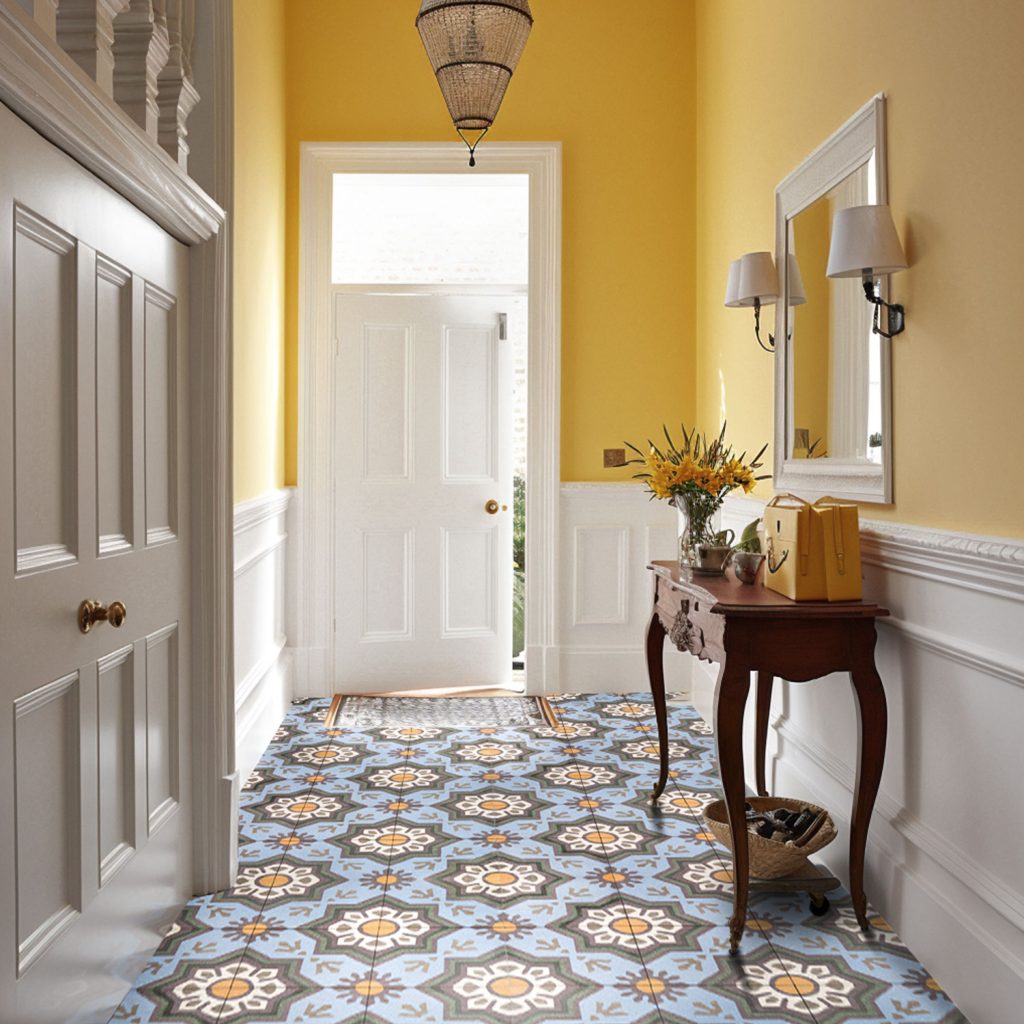
Encaustic cement tiles channel old-world charm with intricate, colourful patterns. The cement base allows for deep saturation of pigment. Vibrant hues and complex designs transport you back in time.
Opt for encaustic tiles with an authentic encaustic process, not just surface printing. This ensures richness and durability. Moroccan-style tiles with eight-pointed stars, floral motifs and geometric shapes capture 1930s panache. Lay out in a patchwork or single pattern.
7. Basketweave Tile Patterns
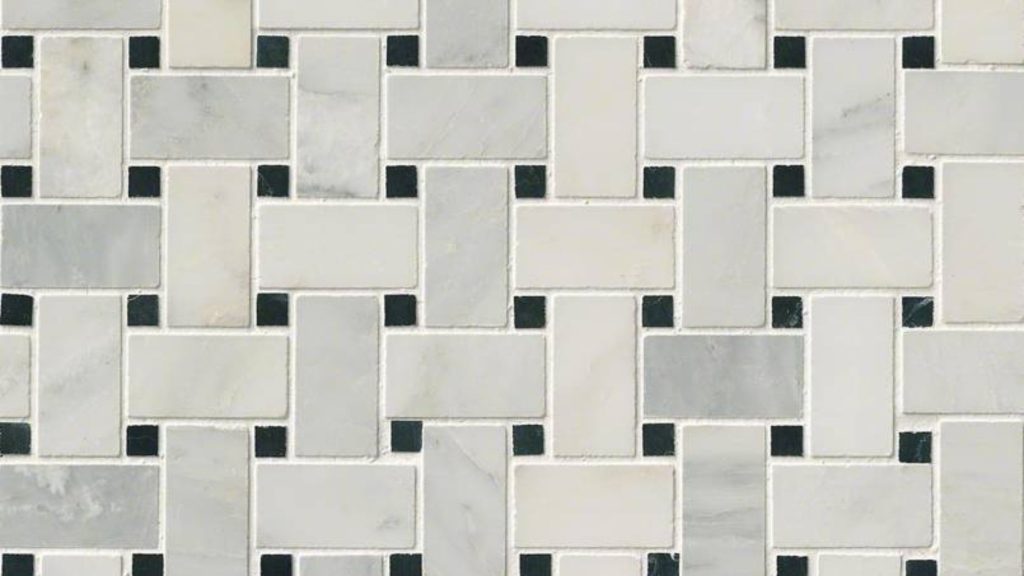
Source: MSI Surfaces
Basketweave tile patterns feature small rectangular tiles arranged in an interlaced design, resembling a woven basket. The tiles alternate direction row by row, creating a textured look full of depth and dimension. Stick with a single neutral tone for a subtle pattern or introduce contrasting colours to make it pop.
For a 1930s style, classic black and white basketweave tiles pair nicely with octagon and dot insets. Or go for a monochromatic look in soft beige or grey. Size of the rectangular tiles ranges from one to three inches smaller sizes increase the sense of movement. Consider laying the floor on the diagonal for visual interest.
8. Penny Round Tiles
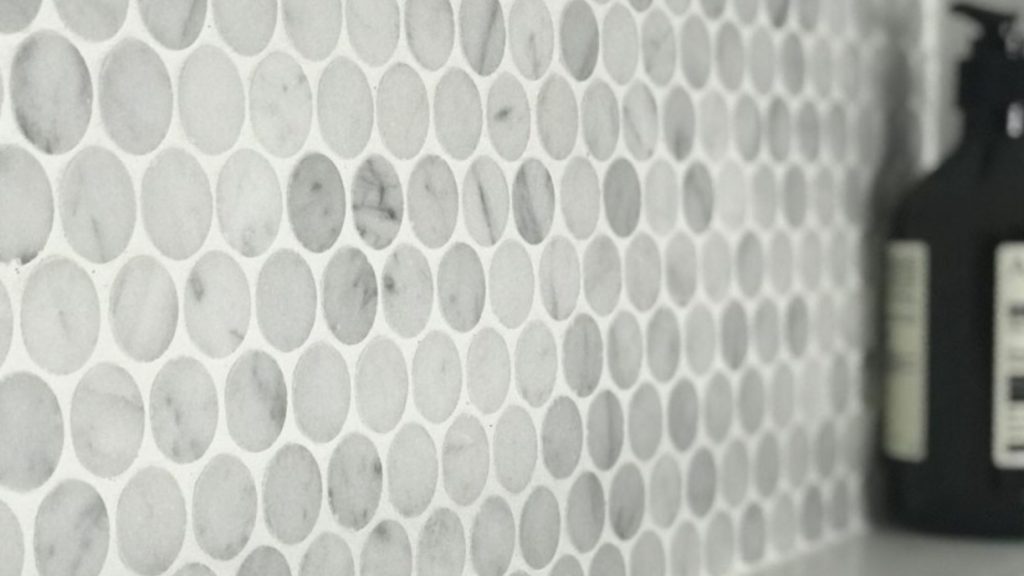
Source: Marble & Ceramic Corp Pty Ltd
Penny round tiles are small, ceramic tiles ranging from half an inch to one inch in diameter. Their name comes from their similarity in size and shape to an old British penny. Use penny tile to create vintage flair reminiscent of early 20th century bathrooms and kitchens.
For a classic 1930s look, consider monochromatic designs using white penny rounds laid in concentric diamonds or frames. To add contrast, alternate black and white tiles in a checkerboard effect. For serious retro appeal, opt for pastel pink, mint green or pale yellow penny tiles arranged in a subway-inspired brick pattern. You can also create custom inlaid designs, such as white tiles with black dots at alternating intersections for a subtle polka dot motif.
Penny rounds coordinate beautifully with other small-scale geometric tiles popular in the 1930s, like hexagons or octagons. Their circular shape helps soften linear edges and create fluidity underfoot. Apply them to backsplashes, define borders or craft insets within larger tile fields for added visual interest. For a truly bespoke look, mix glossy and matte tiles in complementing colours to add dimensional depth.
9. Terrazzo Flooring
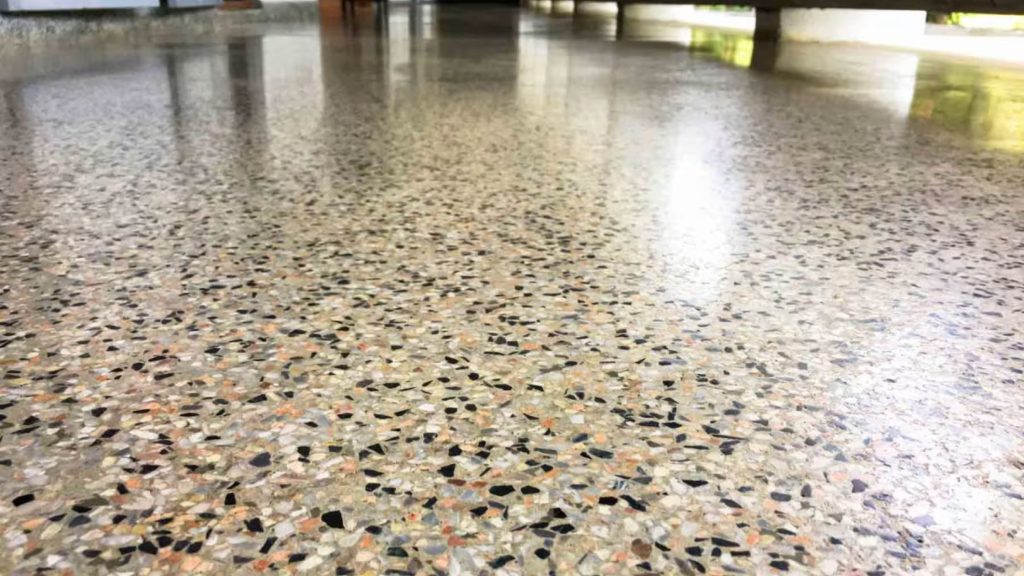
Source: Home Guide
Terrazzo flooring was widely used in 1930s architecture, bringing durability and artistry underfoot. Comprised of marble, quartz, granite, and glass fragments set in concrete or epoxy resin, terrazzo offers the look of expensive stone at a fraction of the cost.
Opt for a traditional monochrome terrazzo floor in black and white speckled chips to emulate 1930s modernist schemes or introduce an array of aggregate colours like pale blue, soft green, or dusky pink for a vibrant, flowing floorscape. Use brass divider strips to section terrazzo floors into dynamic patterns reminiscent of the era.
For a 1930s-inspired look, use a fine terrazzo mix to help it resemble linoleum or concrete floors popular at the time. A tight chip layout and matte finish help capture the machine-age aesthetic. Pair with glossy black subway wall tiles and vintage hexagon floor mosaics in contrasting sheens.
10. Mosaic Tile Designs
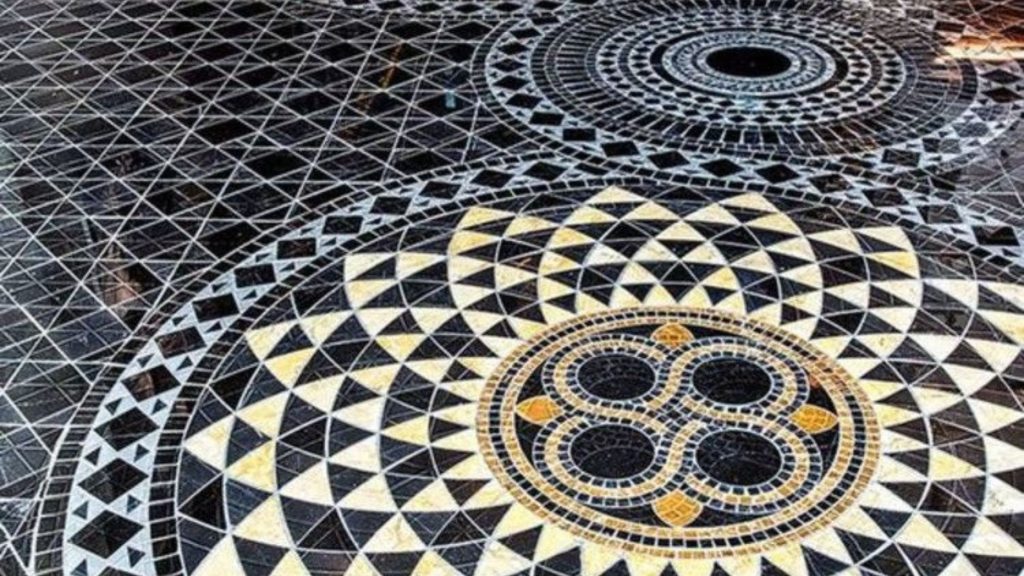
Source: Lima Ceramic Tile
Mosaic tile designs were highly popular in 1930s interiors, bringing artistry and visual richness to floors and walls. Tightly packed tesserae formed intricate pictures, patterns, and geometric arrays in glossy marbles, coloured glass, or glazed ceramic.
For 1930s style, opt for mosaic motifs reminiscent of the era. Classic black and white checkerboards, zigzag deco lines, concentric circles, starbursts, and symmetrical floral patterns all dotted 1930s architecture. Use mosaic tiles to create a decorative floor border, define a central medallion, or cover entire walls and ceilings for visual impact.
Alternatively, make a bolder statement with room-height mosaic murals depicting figurative, abstract, or landscape scenes in glossy marbles and vibrant glass. This highly decorative treatment defined 1930s lobbies, stairwells, bars, and luxury bathrooms.
FAQ
What tile was popular in the 1930s?
Hexagonal and square geometric tile patterns were popular in 1930s homes. These designs often featured bold, intricate patterns that added visual interest to floors and walls.
What type of tile was used in the 1920s?
Small mosaic tiles in black and white or muted colours were commonly used in 1920s homes. These tiles often formed intricate patterns, adding a touch of elegance and sophistication to interiors.
What tile was popular in 1940s?
The 1940s saw a rise in the popularity of bold patterns and vibrant colours in tile design. This era embraced an eclectic and expressive approach to home decor.
Do 1930s houses have wooden floors?
Yes, many homes built in the 1930s featured original hardwood floors. These floors added warmth and timeless beauty to the interiors and are still highly valued in period homes today.
Conclusion
When considering 1930s floor tile ideas, hexagonal, square, and mosaic patterns were particularly common in homes from this era. Many 1930s houses also featured original hardwood floors, adding warmth and timeless beauty to interiors.
Keep these classic options in mind when aiming for a period-appropriate style that brings vintage charm and character to your home.
Want to contribute to our growing blog?
If you are a passionate writer in the Home Improvement or Real Estate and Property niche, and would like to guest post on Bromley Tilers, please get in touch!



